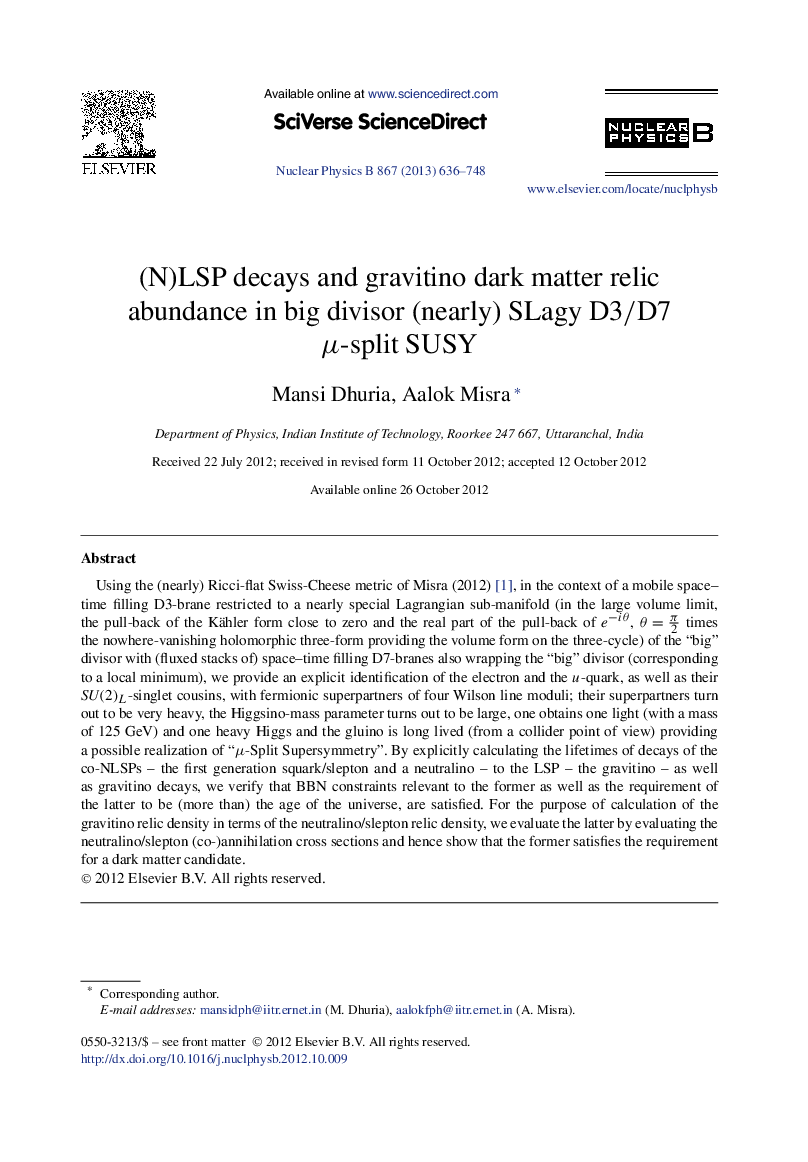| Article ID | Journal | Published Year | Pages | File Type |
|---|---|---|---|---|
| 10720813 | Nuclear Physics B | 2013 | 113 Pages |
Abstract
Using the (nearly) Ricci-flat Swiss-Cheese metric of Misra (2012) [1], in the context of a mobile space-time filling D3-brane restricted to a nearly special Lagrangian sub-manifold (in the large volume limit, the pull-back of the Kähler form close to zero and the real part of the pull-back of eâiθ, θ=Ï2 times the nowhere-vanishing holomorphic three-form providing the volume form on the three-cycle) of the “big” divisor with (fluxed stacks of) space-time filling D7-branes also wrapping the “big” divisor (corresponding to a local minimum), we provide an explicit identification of the electron and the u-quark, as well as their SU(2)L-singlet cousins, with fermionic superpartners of four Wilson line moduli; their superpartners turn out to be very heavy, the Higgsino-mass parameter turns out to be large, one obtains one light (with a mass of 125GeV) and one heavy Higgs and the gluino is long lived (from a collider point of view) providing a possible realization of “μ-Split Supersymmetry”. By explicitly calculating the lifetimes of decays of the co-NLSPs - the first generation squark/slepton and a neutralino - to the LSP - the gravitino - as well as gravitino decays, we verify that BBN constraints relevant to the former as well as the requirement of the latter to be (more than) the age of the universe, are satisfied. For the purpose of calculation of the gravitino relic density in terms of the neutralino/slepton relic density, we evaluate the latter by evaluating the neutralino/slepton (co-)annihilation cross sections and hence show that the former satisfies the requirement for a dark matter candidate.
Related Topics
Physical Sciences and Engineering
Mathematics
Mathematical Physics
Authors
Mansi Dhuria, Aalok Misra,
